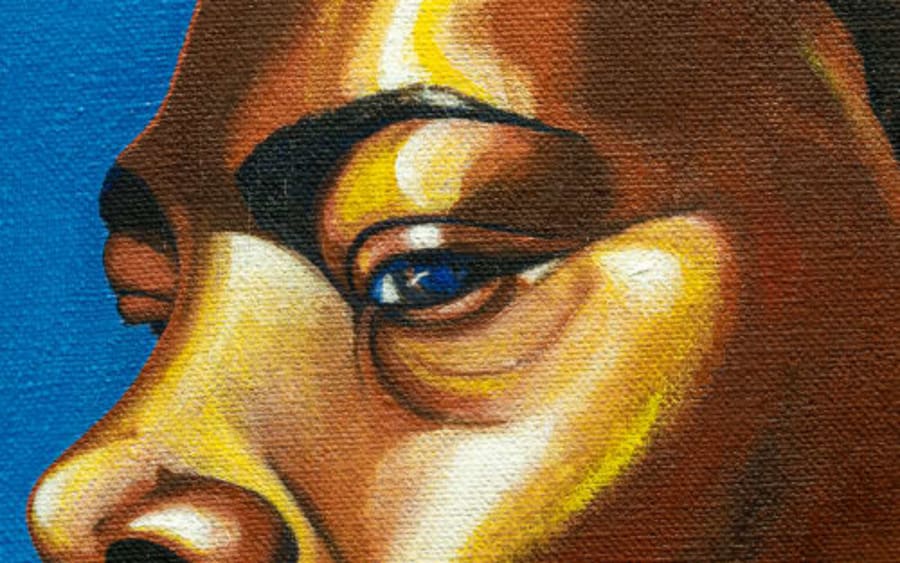In April, Sotheby’s announced that it would raise a staggering USD 700 million through the launch of its first art-backed debt security (Sotheby’s ArtFi Master Trust, Series 2024-1). In contrast, a month later, New York’s marquee postwar and contemporary auctions at Christie’s, Sotheby’s, and Phillips raised a total of USD 937.3 million, 22% lower than those held in 2023 and 55% lower than those in 2022.
Even if a cooling of the broader art trade is underway, art-backed loans and financial vehicles are thriving. So if the health of the loans market is diverging from that of the general art market, how should we understand the relationship between the two?
Any comprehension of the relationship between art loans and wider market conditions is still relatively new. ‘The last time we saw a major global recession, back in 2008, loans linked to art were more closely aligned with consignments – even third-party guarantees were only just emerging in any established way,’ says Caroline Sayan of the London and New York art advisory firm Cadell. ‘The degree to which financial tools are underpinning, shaping, and responding to wider trade behaviors is still emerging.’
That financial tools themselves have developed substantially over the past two decades is, however, widely understood. The market size of outstanding loans against art in 2023 stood between USD 29.2 billion and USD 34.1 billion, according to an estimate from Deloitte’s Art & Finance Report 2023, which indicates this could creep towards USD 40 billion in 2025.
So how are lenders feeling about the current climate in the art market?
‘Our view is that any market shifts are very artist and artwork specific. We look at every particular artist, at their own level. Yes, volumes of trading are lower in the auction market but that doesn’t mean that pricing hasn’t been maintained for many artists,’ says Freya Stewart, the head of art finance at The Fine Art Group. Areas of the trade where there has been speculative investment are typically avoided in loan portfolios, says Stewart, as the works would often lack the ‘market depth and track record’ needed to keep borrowers safe.
Factors impacting the art trade are also influencing art finance. ‘The main issue at play, at the moment, is inflation and rising interest rates,’ says Scott Milleisen, the global head of lending at Sotheby’s Financial Services, which offers loans of between USD 5 million and USD 250 million and is reported to hold a portfolio valued at around USD 2 billion.
Responses from different types of lenders during times of inflation seemingly vary. Private banks have historically demonstrated a more conservative approach towards art financing, particularly during downturns, which has led to speculation that asset-based lenders will continue the accelerated growth trajectory of recent years. Indeed, a survey underpinning Deloitte’s Art & Finance Report 2023 suggested asset-backed lenders could look to grow their art loan book by 24% in 2023 to 2024.
Rebecca Fine, the chief executive of Athena Art Finance, thinks that ‘overall, the art market has demonstrated low correlation with other asset classes’ and tends to hold up in times of economic turmoil, acting as a potential hedge against inflation. She adds: ‘Pure play art lenders, like Athena Art Finance, are looking at more than market trends. Unlike the banks, which lend against clients’ balance sheets, or the auction houses, which participate in the upside from art transactions, specialty art lenders are taking risks that are tied directly to the artworks, so we evaluate each work on its very specific qualities and merits.’
With rates at both private banks and asset-backed lenders consistently high however, should we be expecting a dip in demand for such products? Apparently not. There are reports that mid-to-high level galleries are using loans against stock to release liquidity within an increasingly tough climate, joining individual collectors who are looking at loans for reasons outside of financial necessity. Institutional investors are also said to be entering the field at pace, reportedly having rushed to Sotheby’s art-backed debt security and contributing to the auction house increasing its planned offering from USD 500 million to USD 700 million.
‘People often borrow for financial flexibility, not necessarily need. Many of our top clients have invested in long-term appreciating assets, rather than cash, and are looking to extract liquidity for opportunistic investments, to make more money,’ Milleisen says. Stewart concurs: ‘Our collectors and borrowers are often successful entrepreneurs from a variety of fields. For them, financing is something that they are very at ease with, and it is more a method of optimization, which is how they think of all their assets.’
Flexibility and timing have, of course, always been considerations for art finance – whether holding off on selling until a particular aspect of the market lifts, or releasing funds to acquire target works at a time when they are priced low, or to simply buy time to make decisions – but its relevance is increasingly evident in times of market volatility.
Generational shifts also appear to be at play. ‘We are meeting a younger and more diverse set of clients, many of whom are more comfortable with credit and using it as part of a strategy to grow either their collection or investments. This is in contrast to the historic misconceptions or, arguably, beliefs that debt is something reckless or undesired,’ says Sayuri Ganepola, the global managing director of Christie’s Art Finance. Such a shift may be underway but there remains hesitancy in speaking openly about loans taken. A heightened preference for discretion is also being felt on the market, with The Art Basel and UBS Art Market Report 2024 reporting that as public auction sales fell by 7% in 2023 (to USD 25.1 billion), private sales by auction houses grew by 2% (to USD 3.9 billion).
Another commonality for both art loans and the broader market is their shared dependency on confidence. The growth of loans in recent years can be seen to prosper in regions where regulatory frameworks are developed and enforced, notably the US and its Uniform Commercial Code, which records liens (claims or rights held) against an asset.
The proliferation of online platforms and blockchain solutions for tracking, recording, and auditing transactions are also unpeeling layers of opacity for today’s investors.
As ever, talk of art purely as an investment is countered with caution: ‘The great collectors are well aware of this aspect already and new collectors should be guided by experts in the field and educated about art in the round. Few other investments can be enjoyed in the same way but there a lot of ways to get it very wrong,’ notes the London-based art advisor Tanya Baxter.
And so, if auctions and sales of art are understood to be driven by the three ‘D’s (debt, divorce, and death), there would appear to be three ‘L’s driving today’s world of art finance: liquidity, litheness, and long-term planning. How all these components fit together is a dynamic worth watching closely.
The Art Basel and UBS Art Market Report 2024 is available for download here.
Riah Pryor is an investigative journalist and author specialising in the relationship between the art market and law, supported by her experience working at New Scotland Yard's Art and Antiques Unit.
Caption for top image: Untitled (#06-24), 2024 by Rebecca Morris, presented by Trautwein Herleth at Art Basel in Basel 2024.
Published on August 14, 2024.


